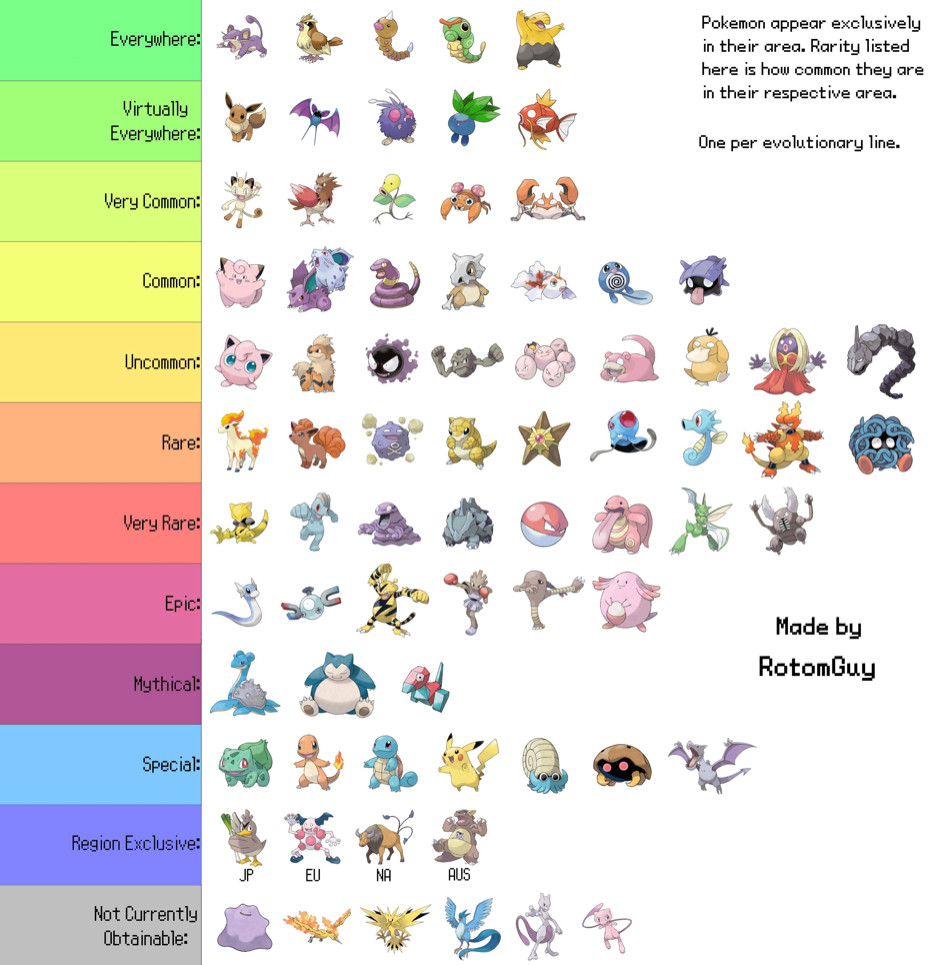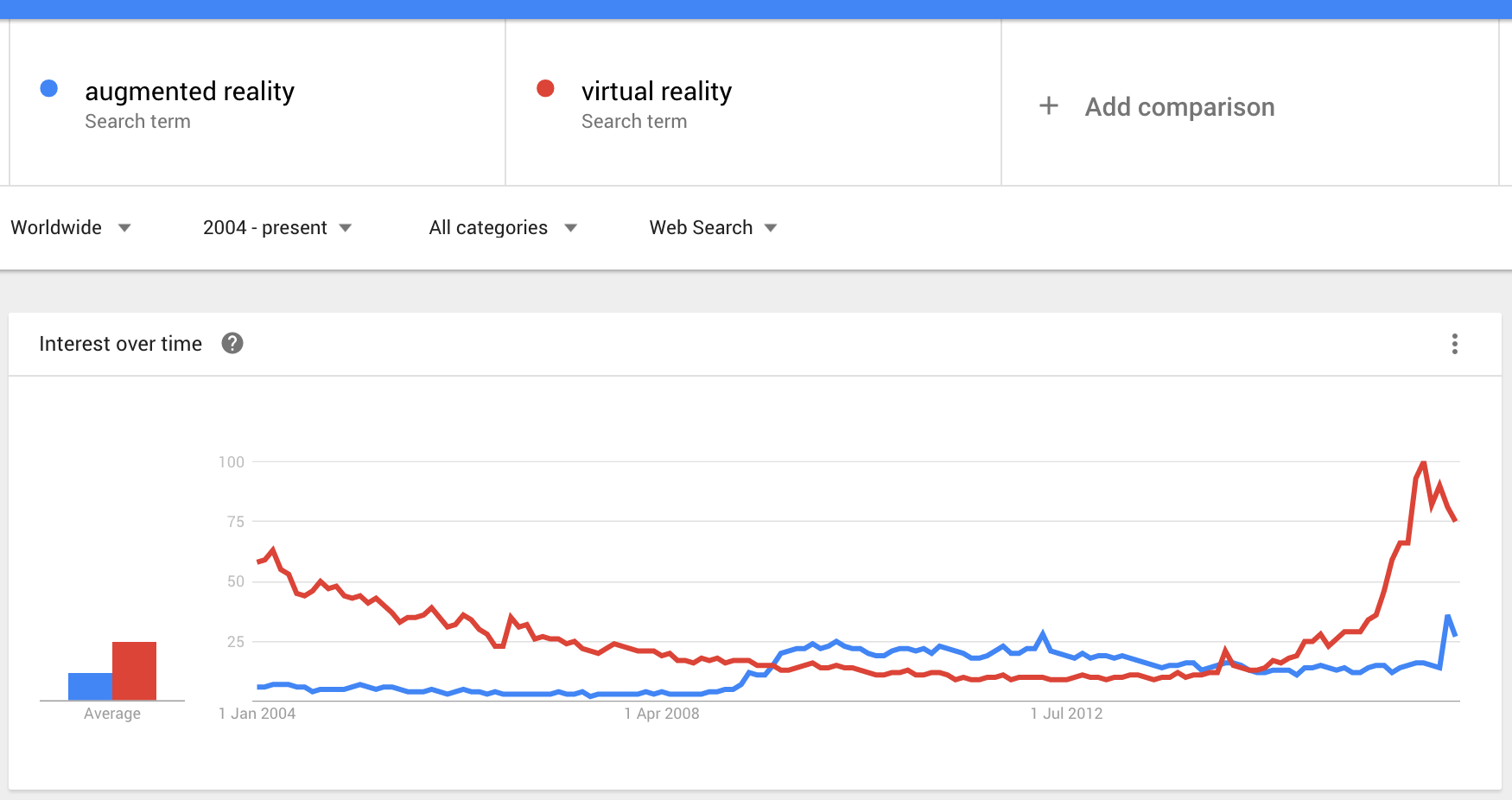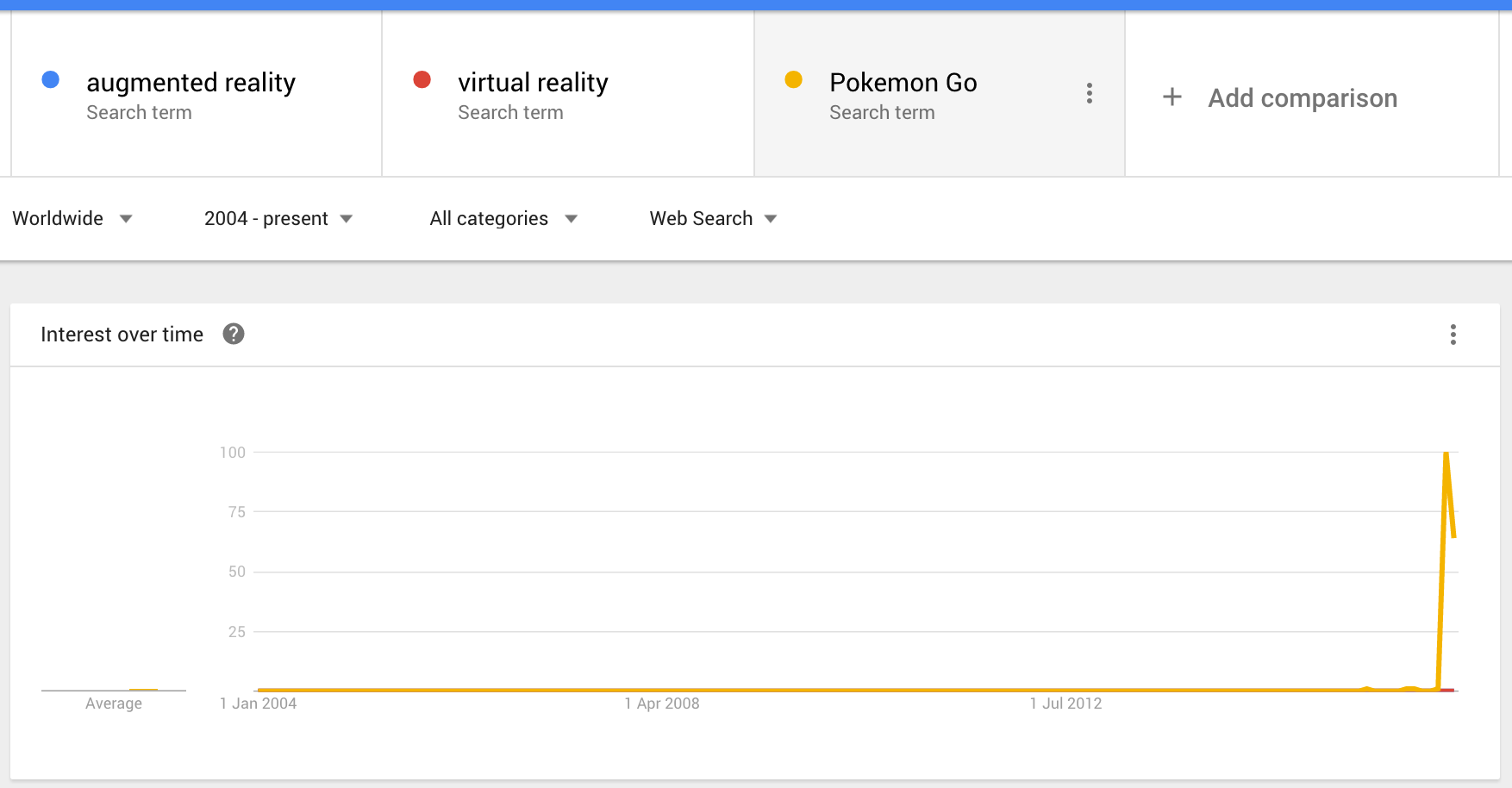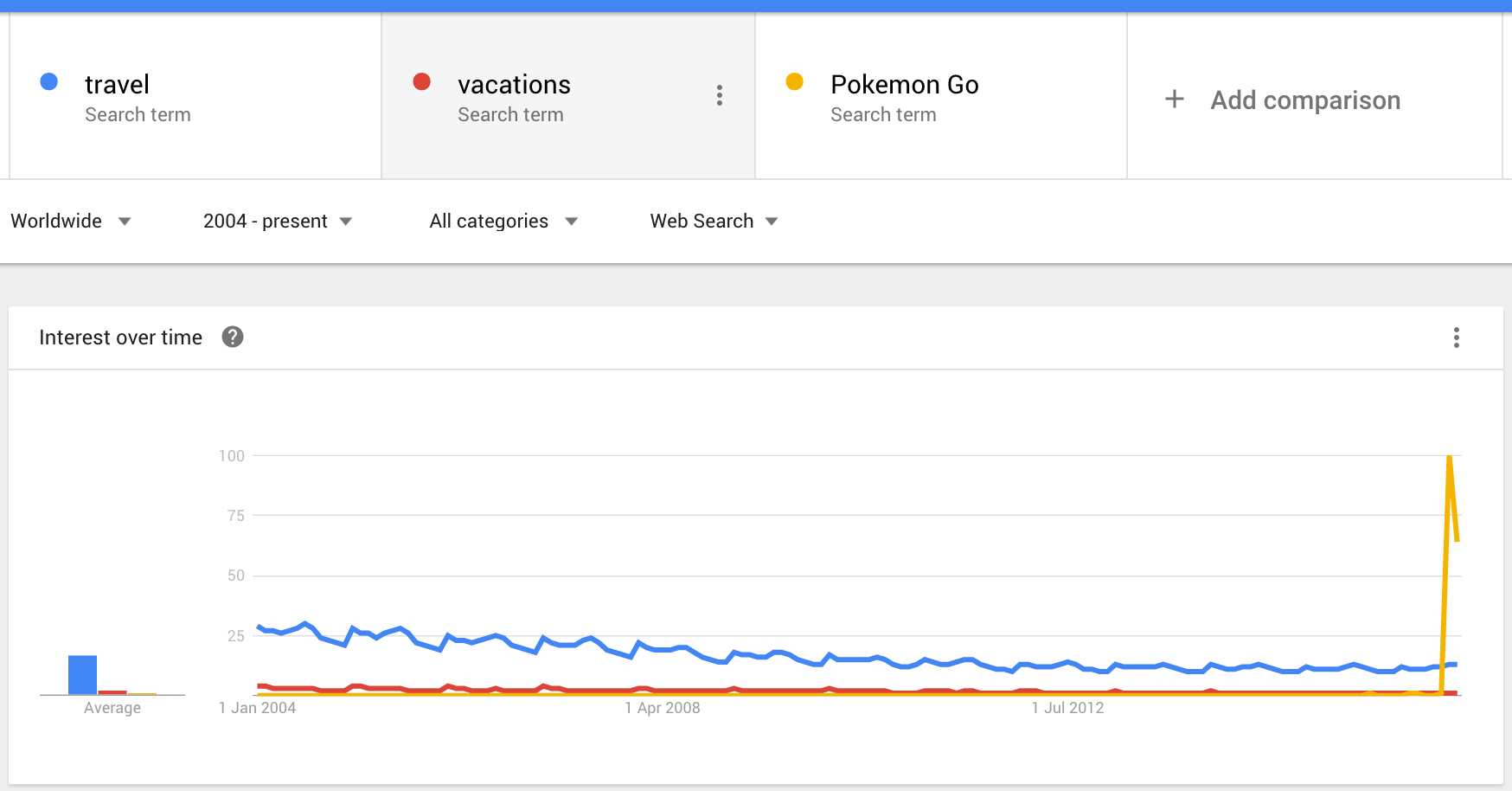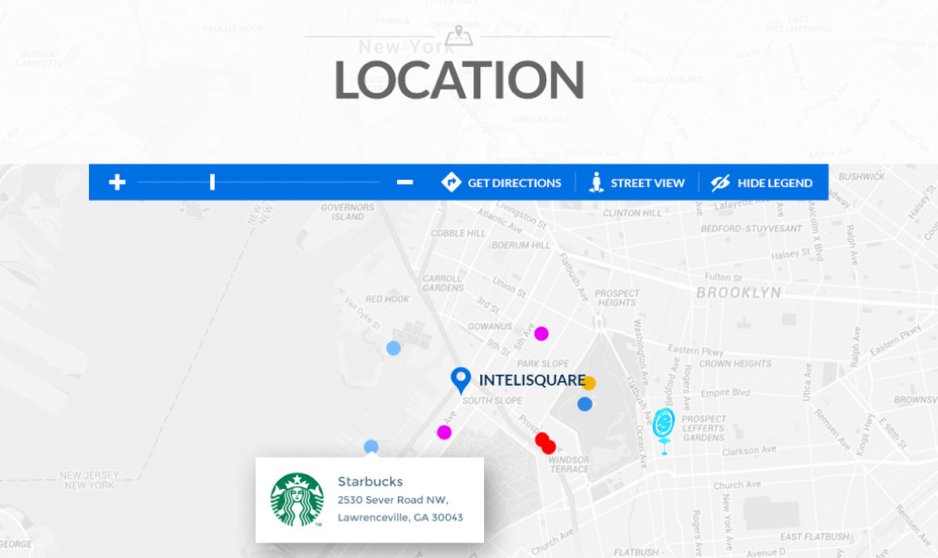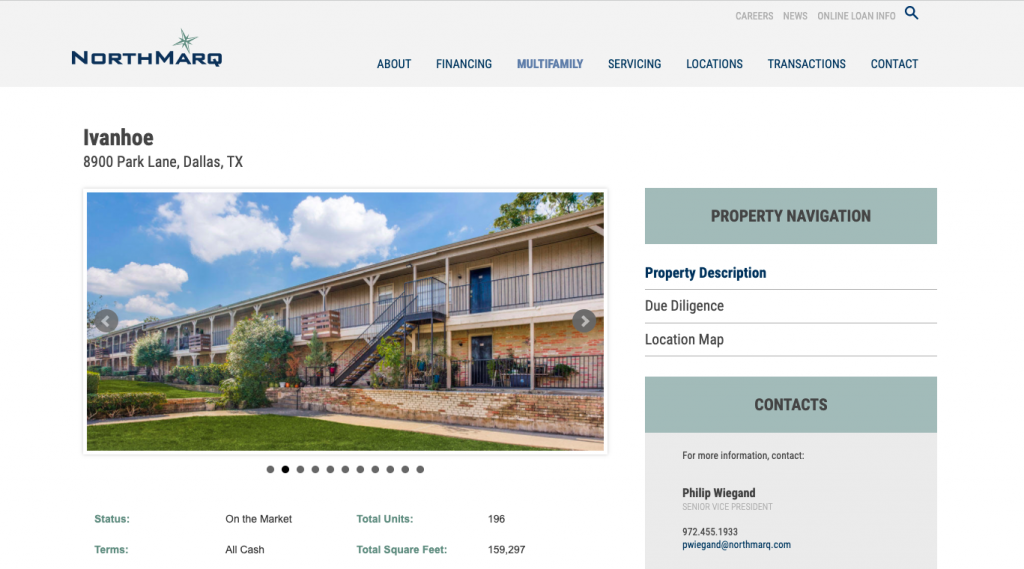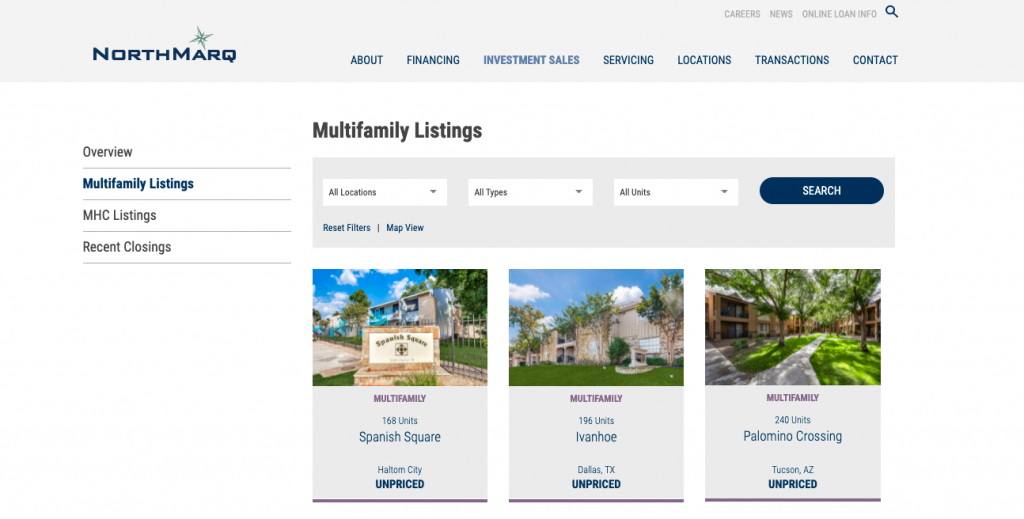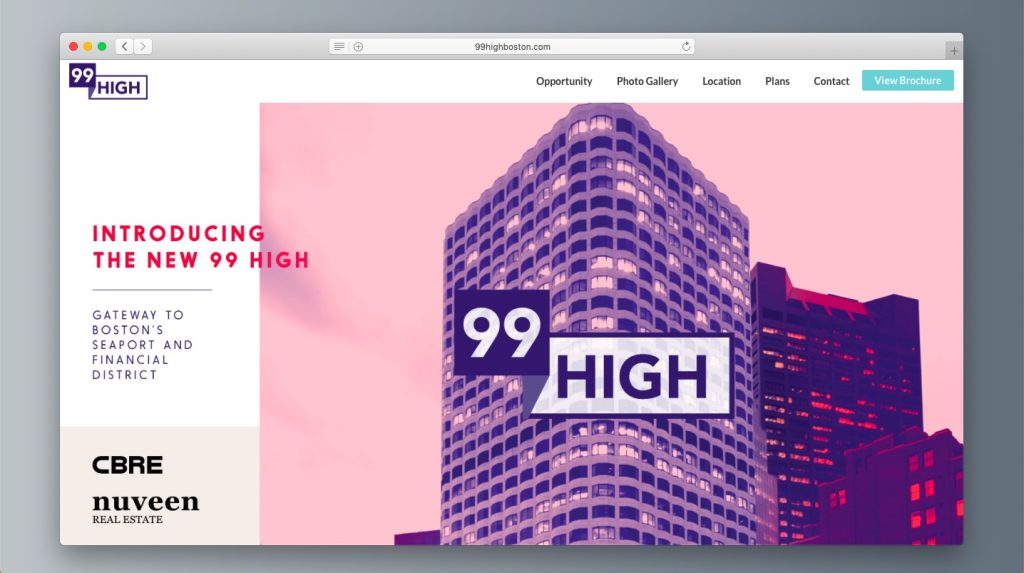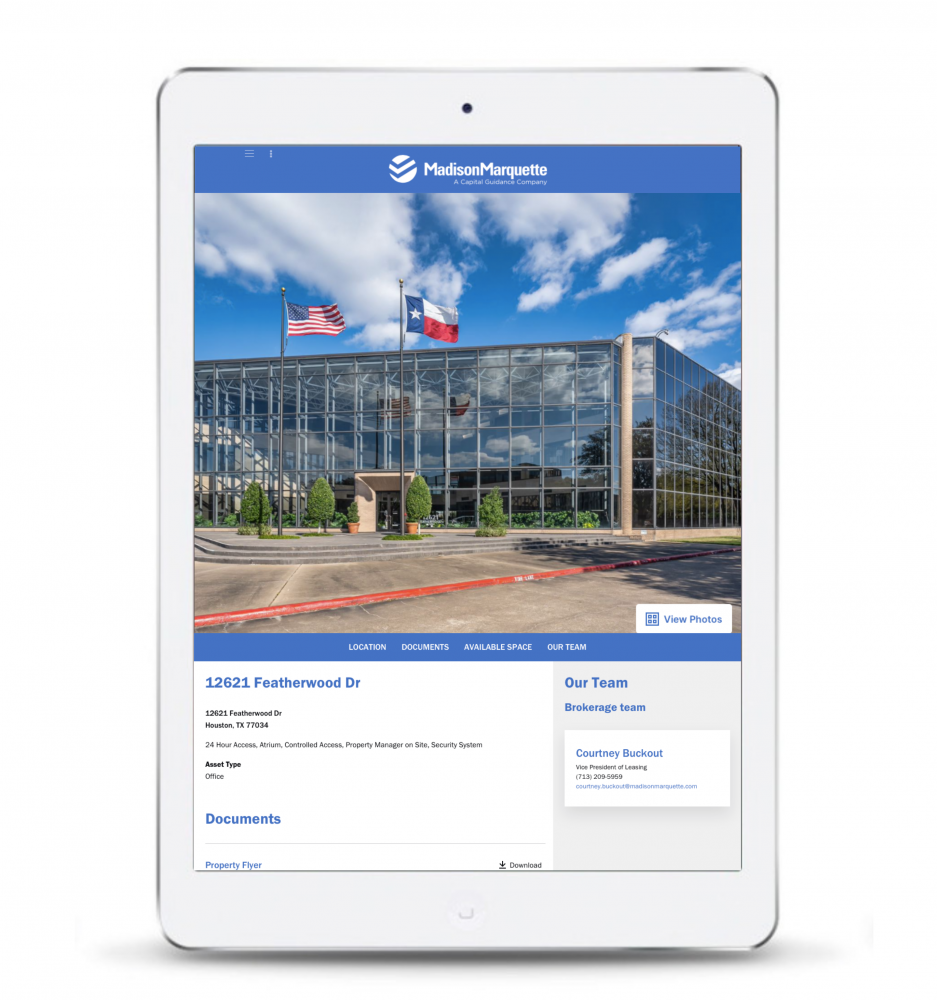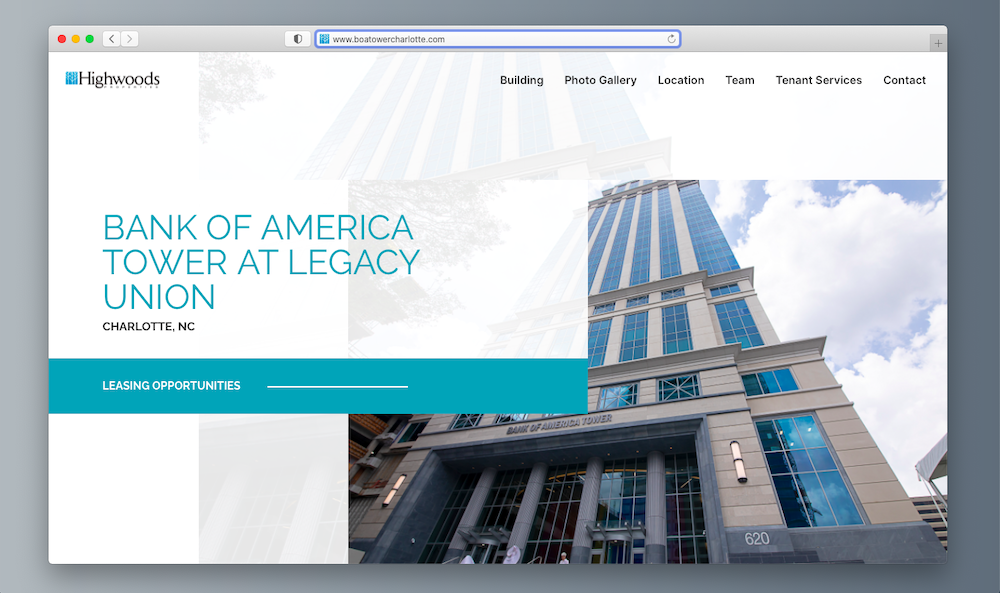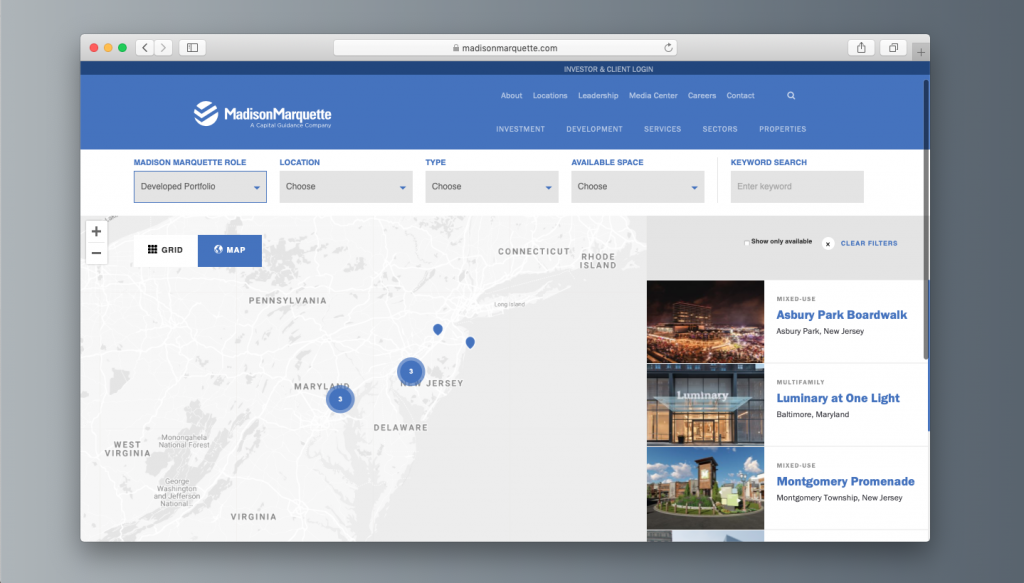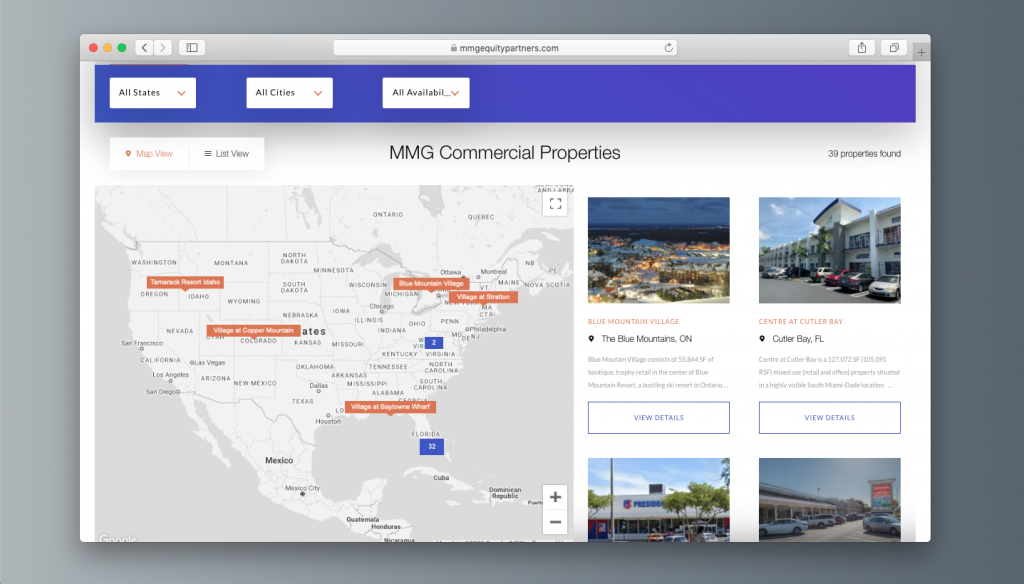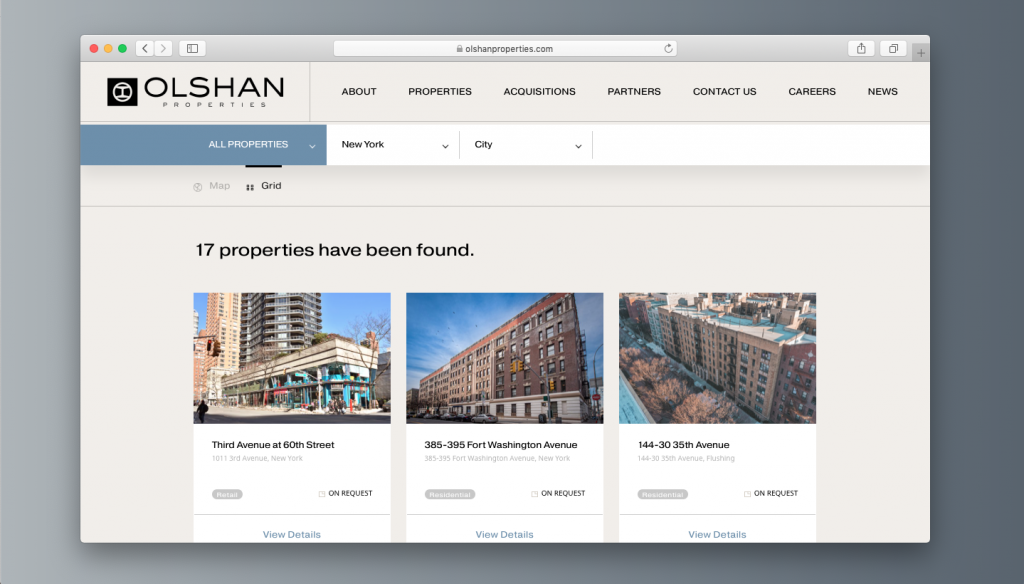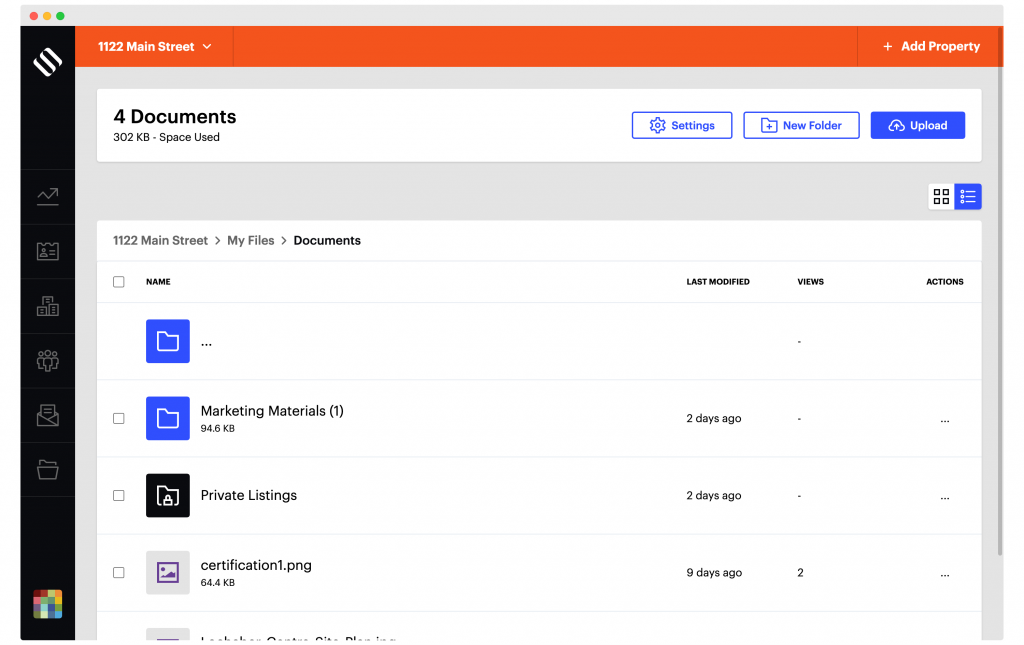While there are hundreds of creative agencies specializing in branding, design, web development, and marketing, there are only a few specialized commercial real estate marketing agencies that produce the quality of work necessary for this industry’s standard of professionalism.
Here’s our list of the best real estate marketing companies that have the depth of industry experience and expertise suited specifically for CRE firms.
inMotion Real Estate Media
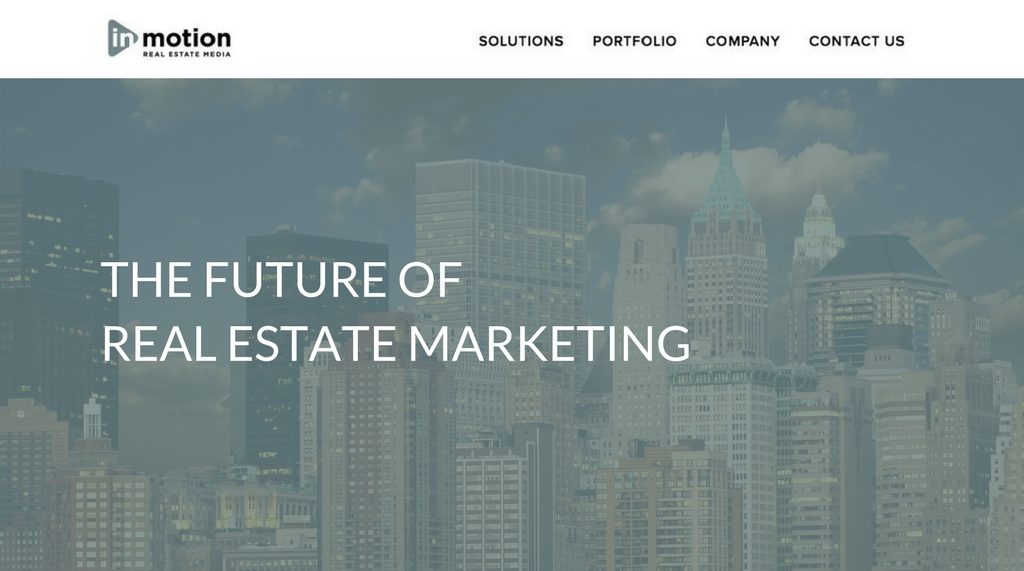
inMotion Real Estate Media is a commercial real estate marketing company that provides a wide array of marketing and creative solutions to some of the world’s largest real estate companies.
Founded: 2006
Solutions: custom website development, graphic design, online marketing and video production.
Sample clients: CBRE, Cushman & Wakefield, JLL, Rockwood Capital, Lincoln Property Company, Marcus & Millichap, NKGF, The Dilweg Companies, Fischer, Lewis Retail
Website: inmotionrealestate.com
Neoscape
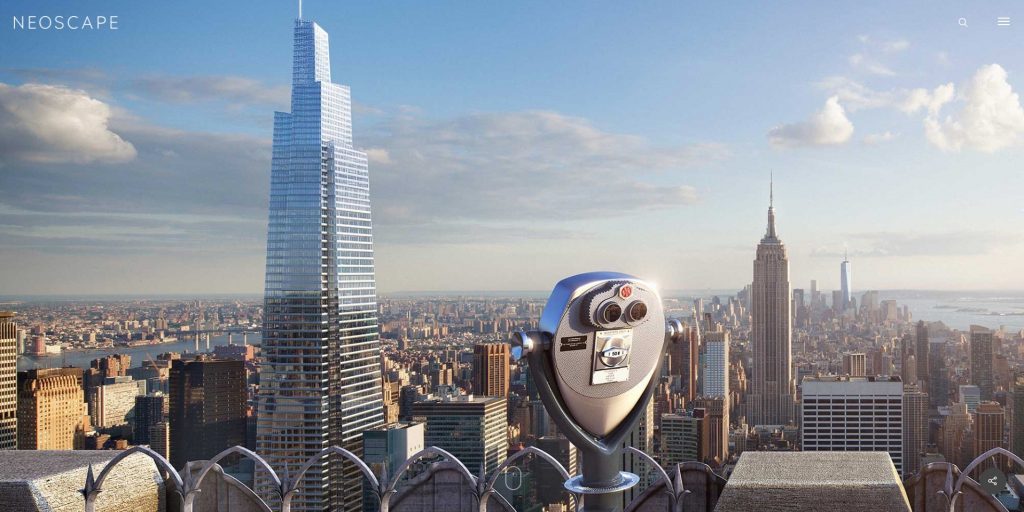
Neoscape is a creative studio with offices in Boston, New York and San Fransisco that has been crafting branded experiences of built environments for discerning clients around the world.
Founded: 1995
Solutions: branding, strategy, design, visual Identity, web & mobile app development, 3D visualization, film & video, animation, photography, VR/AR/MR and interactive experiences
Sample clients: Brookfield Properties, Robert A. M. Stern Architects, Elkus Manfredi Architects, Gensler, Tishman Speyer, Related
Website: neoscape.com
The Seventh Art
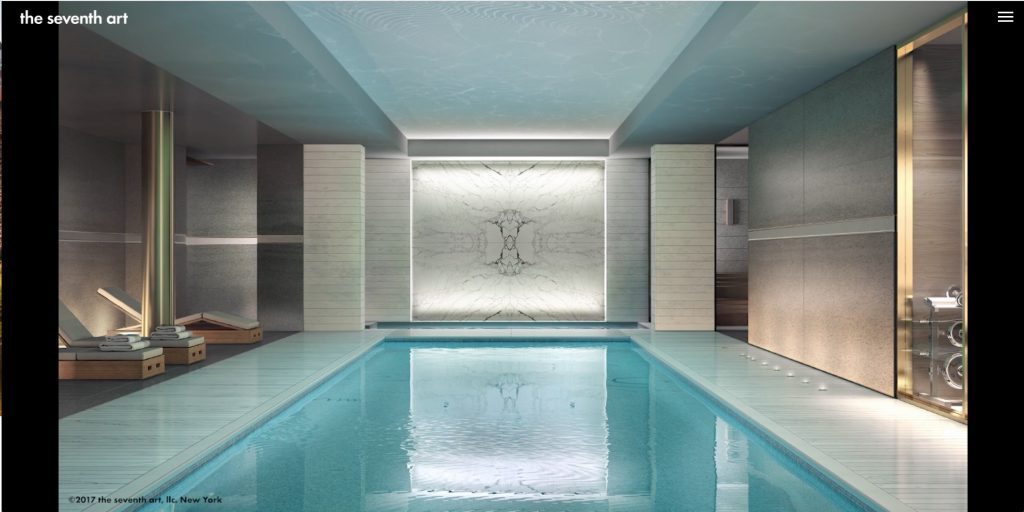
The Seventh Art is a digital communications agency specializing in the branding of upscale lifestyle offerings, including real estate, hospitality, design, culture, travel and bespoke products.
Founded: 2003
Solutions: market research, brand strategy, brochures, e-mail blasts, web design, renderings, floor plans, film and social media
Sample clients: Christie’s, Colliers, Corcoran, The Durst Organization, Goldman Sachs, Halstead Properties, Hines, The JGB Companies, Tishman Speyer, Vornado
Website: theseventhart.com
REA

REA is a brand and marketing agency based in Washington and New York.
Solutions: real estate marketing, corporate branding, property branding, interactive and web development, rendering and animation, leasing and sales environments, video and short films, and media strategy
Sample clients: Hines, Madison Realty Capital, Thor Equities, Equity Office, East End Capital, JBG Smith Properties, Normandy Real Estate Partners, RXR
Website: realestatearts.com
DBOX

DBOX is a creative communications agency based out of London, Miami and New York, operating in residential, commercial, hospitality, destination, and cultural sectors.
Founded: 1996
Solutions: market intelligence, positioning and brand identity, communications strategy, graphic and environmental design, print and digital advertising, computer generated imagery and animation, virtual reality applications, photography & film production, mobile and social media marketing, web and interactive design, branded sales and leasing experiences
Sample clients: Hines, HFZ, Ivanhoe Cambridge, Macklowe Properties, Oxford Properties, The Peebles Corporation, Phoenix Property, Swire Properties, Witkoff, Woodridge Capital
Website: dbox.com
Visualhouse

Visualhouse is a creative agency focused on creating compelling brand stories for architecture, design and the built environment with offices in New York, Los Angeles, London, Miami and San Francisco.
Founded: 2008
Solutions: strategy, 3D visualization, still imagery, film, animation, branding, graphic design, photography, web development, immersive imagery
Sample clients: Related Companies, The Howard Hughes Corporation, Extell Development, Townscape Partners, Two Trees Management, L & L Holdings, Gale International, Magellan Development Group, Brookfield Properties
Website: visualhouse.co



